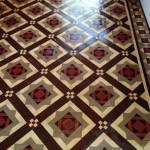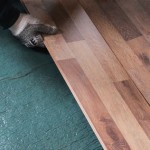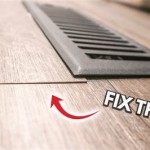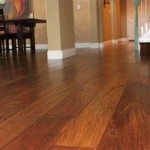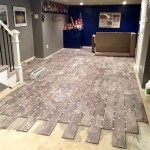How to Level a Wood Subfloor for Tile Flooring
Installing tile over a wood subfloor can transform the aesthetic of a room, adding durability and a sophisticated look. However, successful tile installation hinges on a critical prerequisite: a level and stable subfloor. Wood subfloors, over time, can develop imperfections such as dips, humps, and unevenness due to settling, moisture changes, or structural issues. These imperfections, if not addressed, will telegraph through the tile, leading to cracked tiles, grout lines, and an overall unsatisfactory result. Properly leveling the wood subfloor is therefore an essential step to ensure a long-lasting, beautiful tile installation.
This article will provide a comprehensive guide on how to level a wood subfloor specifically for tile flooring. It will cover the necessary tools and materials, detailed steps for identifying and correcting imperfections, and important considerations for achieving a professional-quality result. From preparing the surface to applying self-leveling compounds, this guide will equip you with the knowledge and techniques required to create a solid, level foundation for your tile.
Assessing the Subfloor and Gathering Materials
The first and arguably most important step is a thorough assessment of the existing wood subfloor. This involves identifying areas of unevenness, structural weaknesses, and any existing damage. A meticulous inspection at this stage will dictate the subsequent approach and ensure that the correct materials and methods are employed.
Begin by removing any existing flooring, such as carpet, vinyl, or old tile. Ensure the subfloor is clean and free of debris, nails, staples, or adhesive residue. A scraper, putty knife, and vacuum cleaner are invaluable for this task. Once the subfloor is clear, conduct a visual inspection for any apparent signs of damage, such as water stains, mold growth, or wood rot. These issues must be addressed before proceeding with leveling, as they can compromise the structural integrity of the subfloor and lead to future problems.
Next, use a long level (at least 6 feet) and a straightedge to identify areas of unevenness. Place the level across different sections of the subfloor, both lengthwise and widthwise, and note any gaps between the level and the surface. A longer level will provide a more accurate assessment of the overall flatness. Mark these areas with a pencil for later correction. A laser level can also be used for this purpose. It projects a perfectly level line across the room, making it easy to identify high and low spots.
In addition to checking for flatness, inspect the subfloor for any signs of deflection or movement. Walk across the subfloor and pay attention to any areas that feel soft or bouncy. These areas may indicate structural weaknesses, such as loose joists or damaged plywood. Addressing these issues may require reinforcing the joists or replacing sections of the subfloor.
Once the assessment is complete, gather the necessary materials and tools. These typically include:
- Self-Leveling Compound (SLC): Choose an SLC specifically designed for wood subfloors and suitable for tile installation.
- Self-Leveling Primer: Many SLC manufacturers recommend using a primer to improve adhesion and prevent air bubbles.
- Wood Patch or Filler: For filling small gaps, cracks, or nail holes.
- Plywood Underlayment (Optional): For reinforcing the subfloor or creating a smoother, more uniform surface.
- Mixing Bucket: A large, sturdy bucket for mixing the SLC.
- Mixing Paddle: Use a drill-mounted mixing paddle for thorough blending of the SLC.
- Notched Squeegee or Gauge Rake: For spreading the SLC evenly.
- Spiked Roller: To remove air bubbles from the SLC.
- Level (6-foot or longer): For checking the flatness of the subfloor.
- Straightedge: For identifying small imperfections.
- Hammer and Nails or Screws: For securing plywood underlayment or making repairs.
- Circular Saw or Jigsaw: For cutting plywood underlayment.
- Safety Glasses and Dust Mask: For personal protection.
- Gloves: To protect your hands from the SLC.
Having all the necessary materials and tools on hand before beginning the leveling process will ensure a smoother and more efficient workflow.
Correcting Imperfections and Reinforcing the Subfloor
After the initial assessment, the next step involves addressing the identified imperfections and ensuring the subfloor's structural integrity. This may involve filling small gaps and holes, reinforcing weak areas, or installing plywood underlayment. The specific approach will depend on the severity and nature of the imperfections.
For small gaps, cracks, and nail holes, use a wood patch or filler compound. Apply the filler with a putty knife, pressing it firmly into the imperfections. Allow the filler to dry completely according to the manufacturer's instructions. Once dry, sand the filled areas smooth with fine-grit sandpaper to ensure they are flush with the surrounding subfloor.
If the subfloor has minor dips or low spots, these can often be corrected with multiple thin layers of self-leveling compound. However, for larger dips (greater than ¼ inch), it may be necessary to use shims or plywood to build up the low areas before applying the SLC. Cut shims from thin pieces of wood and secure them to the subfloor with construction adhesive and screws. Ensure the shims are level with the surrounding subfloor. Alternatively, cut pieces of plywood to fit the low areas and secure them to the subfloor in the same manner.
Addressing structural weaknesses is crucial for preventing future problems. If the subfloor feels soft or bouncy in certain areas, this may indicate loose joists or damaged plywood. To reinforce the joists, you can sister them by attaching new joists alongside the existing ones. Use construction adhesive and screws to secure the new joists to the existing ones. Ensure the new joists are the same size and dimensions as the existing ones and are properly supported at both ends.
If sections of the plywood subfloor are damaged beyond repair, it may be necessary to replace them entirely. Cut out the damaged sections with a circular saw or jigsaw, being careful not to cut into the joists. Install new plywood of the same thickness and grade as the existing subfloor. Secure the new plywood to the joists with construction adhesive and screws. Stagger the seams of the new plywood to avoid creating weak points in the subfloor.
In some cases, installing a layer of plywood underlayment over the existing subfloor can provide a smoother, more uniform surface for tile installation. This is particularly useful if the existing subfloor has numerous small imperfections or is made of different materials. Use a high-quality plywood underlayment that is specifically designed for tile installation. Ensure the underlayment is properly acclimated to the room's humidity levels before installation to prevent warping or movement. Secure the underlayment to the subfloor with construction adhesive and screws, spacing the screws according to the manufacturer's instructions. Stagger the seams of the underlayment and leave a small gap (approximately ⅛ inch) between the sheets to allow for expansion and contraction.
Applying Self-Leveling Compound
Once the subfloor has been properly prepared and any necessary repairs or reinforcement have been completed, the final step is to apply self-leveling compound (SLC). The SLC will flow into any remaining imperfections, creating a perfectly level surface for tile installation. It is crucial to follow the manufacturer's instructions carefully to ensure proper mixing and application.
Before applying the SLC, thoroughly clean the subfloor to remove any dust, debris, or residue. Vacuum the surface and then wipe it down with a damp cloth. Allow the subfloor to dry completely before proceeding. Next, apply a primer specifically designed for use with self-leveling compounds. The primer will improve adhesion and prevent air bubbles from forming in the SLC. Apply the primer evenly with a brush or roller, following the manufacturer's instructions. Allow the primer to dry completely before applying the SLC.
Prepare the SLC according to the manufacturer's instructions. Typically, this involves mixing the powder with water in a large mixing bucket using a drill-mounted mixing paddle. Add the water gradually while mixing, ensuring that the mixture is smooth and free of lumps. The consistency should be similar to pancake batter. Be sure to use the correct amount of water, as too much or too little water can affect the performance of the SLC.
Once the SLC is properly mixed, pour it onto the subfloor in a continuous stream. Use a notched squeegee or gauge rake to spread the SLC evenly across the surface. Work quickly, as the SLC will begin to set within a short period of time. Ensure that the SLC covers the entire subfloor and that there are no areas that are too thin or too thick. The thickness of the SLC should be determined based on the manufacturer's recommendations and the severity of the imperfections in the subfloor.
After the SLC has been spread, use a spiked roller to remove any air bubbles that may have formed. Roll the spiked roller across the entire surface of the SLC, overlapping each pass. This will help to ensure that the SLC is smooth and free of imperfections.
Allow the SLC to dry completely according to the manufacturer's instructions. This may take several hours or even days, depending on the product and the ambient temperature and humidity. Avoid walking on the SLC while it is drying. Once the SLC is completely dry, inspect the surface for any imperfections. If necessary, you can lightly sand any high spots with fine-grit sandpaper.
With the subfloor now level and properly prepared, it is ready for the tile installation. Following these steps diligently will help ensure a successful and long-lasting tile floor.

How To Prepare A Subfloor For Tile Installation The Home

How To Level A Subfloor Before Laying Tile

How To Level A Floor For Tile Expert Tips And Advice

How To Prepare A Subfloor For Tile Installation The Home

How To Prep Wood Subfloor For Luxury Vinyl Plank Flooring Beginners Fix High And Low Spots

How To Prepare A Subfloor For Tile Installation The Home
%20(2).png?strip=all)
How To Level A Subfloor Lay Flooring

Wood Floor Shims How To Use Them Remove Squeaky Floors Easiklip

How To Prepare Subfloor For Tile The Home

How To Install Tile Over A Wood Subfloor 2025 Today S Homeowner
See Also

